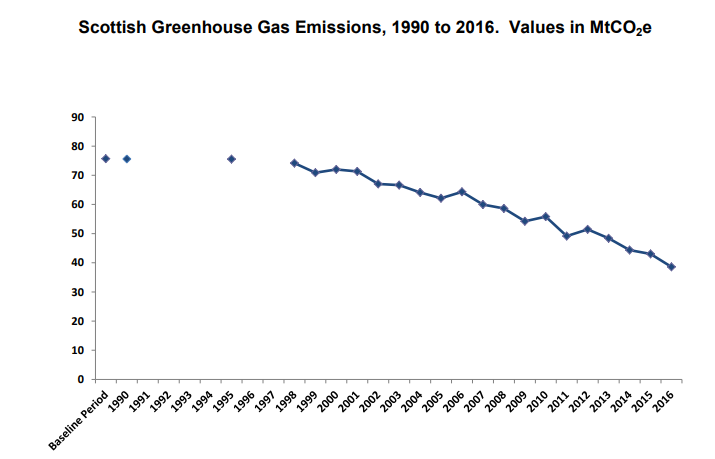Scotland making strong headway in cutting carbon emissions
Fresh data has highlighted Scotland’s strong progress in making the transition to a low-carbon economy.

Fresh data has highlighted Scotland’s strong progress in making the transition to a low-carbon economy.
New statistics from the Scottish Government show that as of 2016 the country has managed to reduce greenhouse gas emissions by 49 percent compared to 1990.
The news comes shortly after the devolved administration set a bold new target to reduce carbon emissions by 90 percent by 2050.
Climate Change Secretary Roseanna Cunningham said the data showed Scotland’s role “as an international leader in the fight against climate change.”
The energy sector has been most successful with emissions falling by 15.6 million tonnes of carbon dioxide, a drop of 68.5 percent since 1990.
This was followed by business and industry, which saw emissions decline by 5.8 million tonnes. Improvements in waste management also led to reductions of 4.4 million tonnes, the highest percentage change at an astonishing 72.8 percent.
“We all have a role to play in that fight and I want to thank the households, communities and businesses who are working hard every day to reduce their own emissions…But we must go further and faster if we are to meet our responsibilities to our children, grandchildren, and future generations,” Cunningham added.
The good news was tempered somewhat by increases in shipping and aviation emissions of 0.5 million tonnes.
Scotland has been a pioneer in developing renewable technologies, especially onshore wind. All renewables are now the country’s largest source of electricity generation, supplying 42.9 percent of all power. Fossil fuels only account for 13 percent of generation.
Across the whole of the UK, greenhouse emissions have fallen by 41 percent since 1990. This means it is on course to meet an interim target of a 37 percent reduction by 2022. However, Scotland’s own targets are more stringent, requiring an overall drop of 57 percent within the next two years.
Source: Scottish Government







